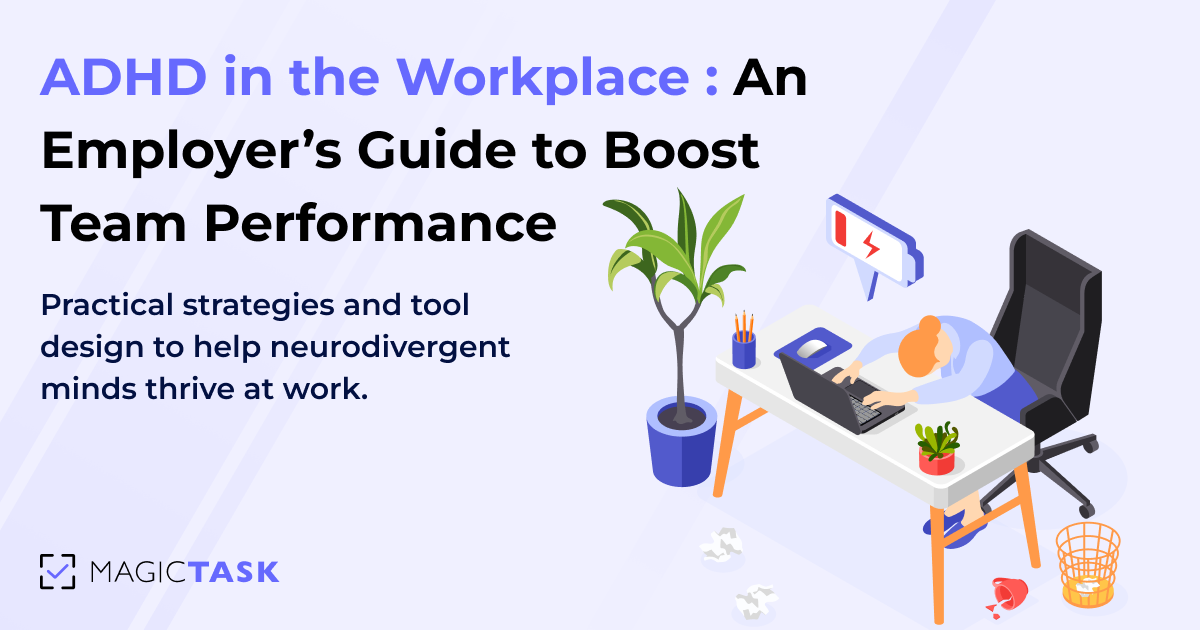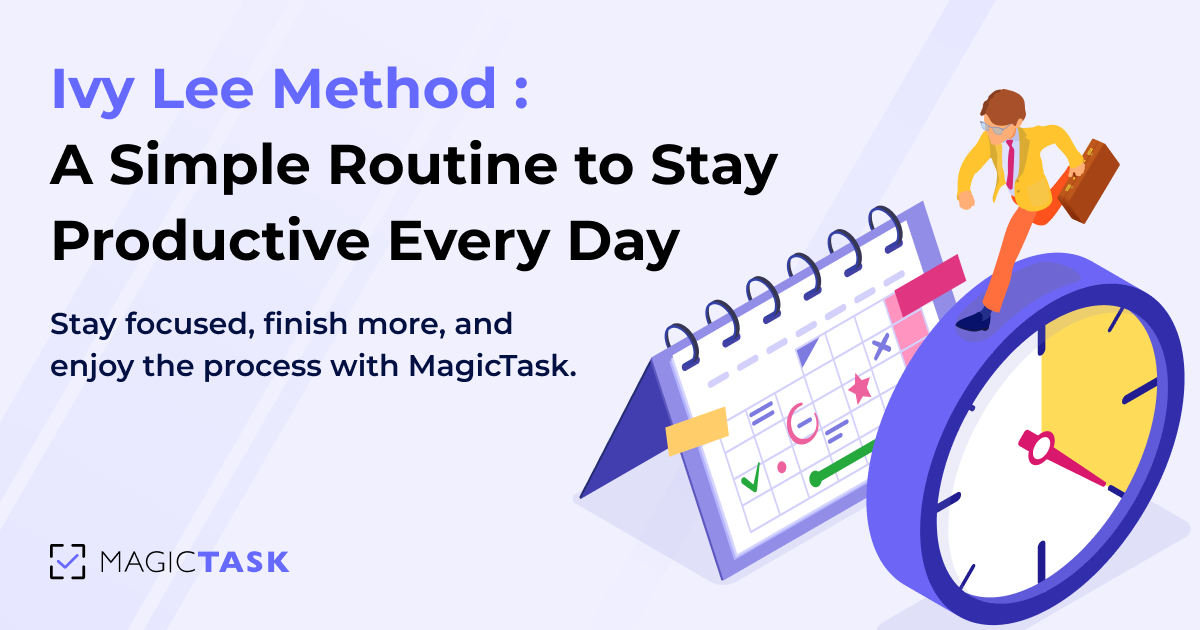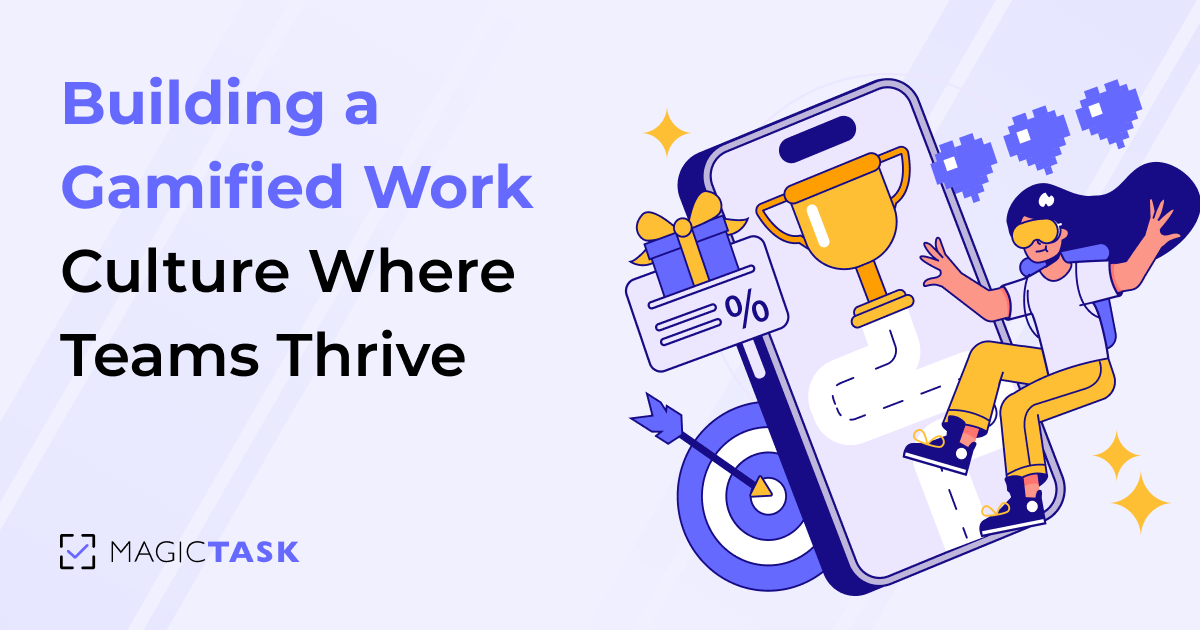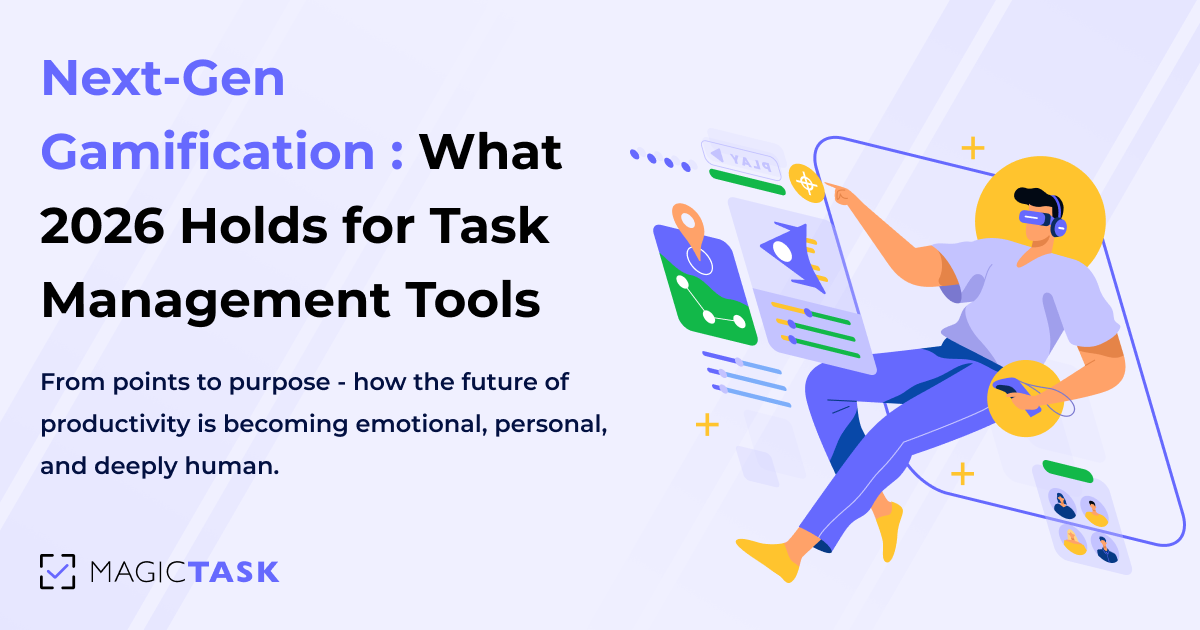Monotasking Explained: What It Is and How to Master It
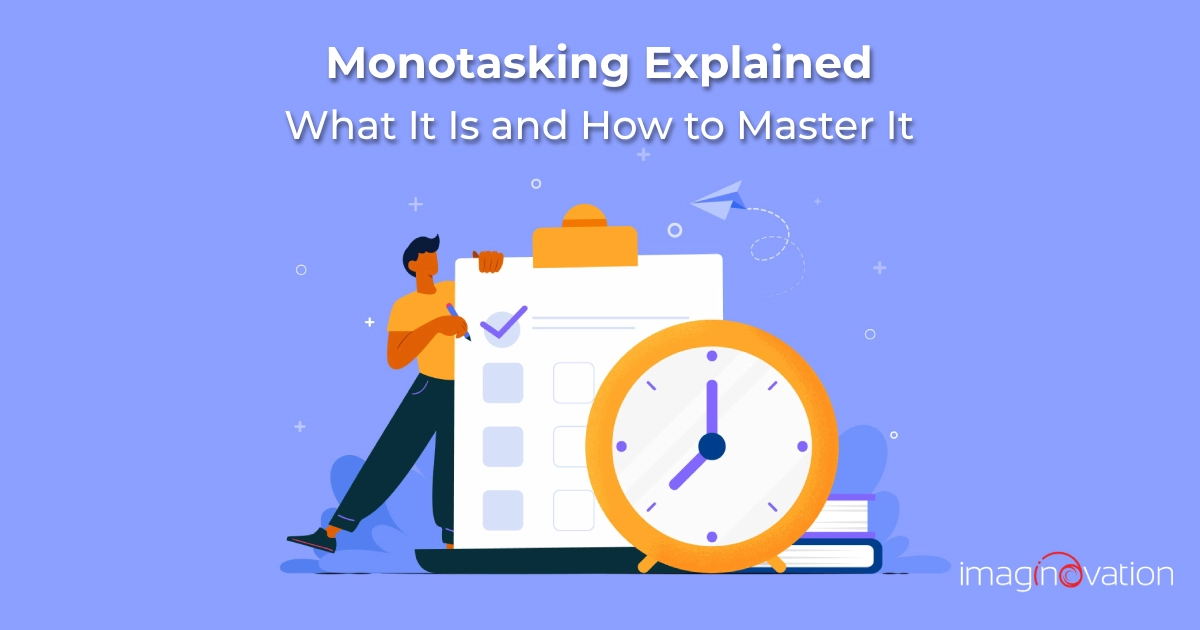
Feeling overwhelmed with too many tasks and not getting much done?
You’re not alone. In fact, over 50 percent of employees find themselves stuck in the multitasking hamster wheel and realize their productivity isn’t what it could be.
That’s where monotasking comes in—a breath of fresh air for focus and efficiency.
Imagine the clarity and satisfaction of seeing one task through to the end without the constant interruptions of multitasking.
Less distraction, more engaging work and better results—it's no wonder why single-tasking is proven to work for personal productivity and happiness.
And with dedication and a small shift in how you do daily tasks, monotasking can be a part of your daily routine.
Read further as we breakdown what monotasking is, how it truly helps, and how you can master it.
Let’s get started.
What is Monotasking? The Science Behind Monotasking
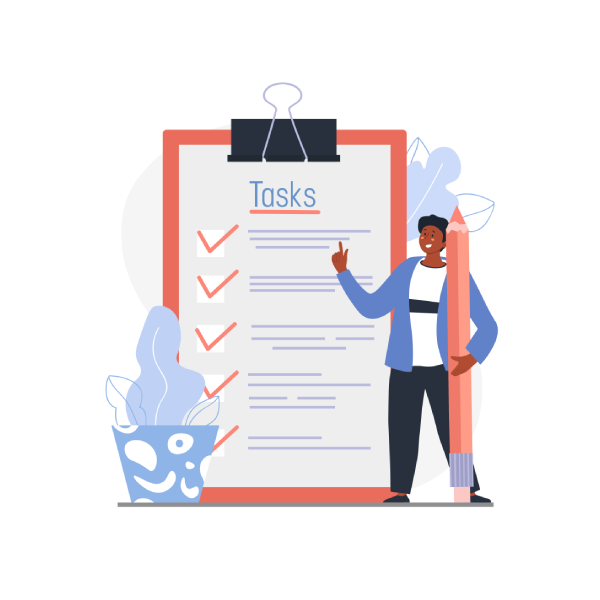
Monotasking is focusing on one task at a time. This is different from multitasking, where you try to juggle multiple tasks at once.
Research shows monotasking can boost productivity because it’s how your brain processes information naturally. The human brain processes tasks sequentially, not simultaneously.
This means when you focus on one complex task, like reading or problem-solving, the prefrontal cortex performs better.
Task switching, on the other hand, leaves what’s called “attention residue,” where your focus lingers on the previous task and reduces performance on the current one.
Cognitive science shows your brain has limited attentional resources, so every time you switch tasks, those resources get depleted faster. You’re using more brain resources like glucose—and as a result, you're left exhausted.
When you monotask, you form deeper neural connections that reduce stress hormones. Your work sessions are calmer and more productive, and you see a boost in how you problem-solve and think creatively.
As you build your “monotasking muscles,” you’ll see better quality in your work as your attention span increases and decision fatigue decreases over time.
So not only are you more productive with monotasking, but your work sessions are more calm, creative and collected—and this has plenty of trickle-down benefits.
Monotasking Benefits
The proof is in the pudding—monotasking is proven to work with our biology, not against it.
When you monotask your way to completing tasks, you work in alignment with how your brain processes information, you create less stress hormones, and your memory improves.
It’s a no-brainer, right?
Let’s explore how single-tasking can have real-world benefits to your personal and professional life.
1. Longer Attention Span
Is our attention span a mere 8 seconds? Falling behind, even, a Goldfish? Although it’s decreasing, the 8-second attention span has been debunked.
What’s real is that our attention span is dependent on the task we engage in. The more riddled a task is with distractions, the less attention we can pay to it.
So, it’s no surprise that screen tasks are seeing lower and lower attention spans, with some studies estimating our average at 40 seconds.
This is where monotasking prevails.
By practicing monotasking regularly, you resist the urge to task switch and you retain information better over time.
2. Better Time Management
There just isn’t enough time in a day to accomplish tasks. Let alone a week, a month or a year for bigger projects.
With monotasking, you’ll become better at time management by prioritizing tasks.
It’s simple—when you improve your task management, you’ll have more time to do the things you enjoy.
You’ll focus on the most important things, making you more disciplined and efficient—and that means a much, much better work-life balance.
3. Improved Listening Skills
Listening is critical to just about everything we do—from having healthy relationships to creating quality work.
Studies even show that 70% of employees suffer from poor listening skills.
Misunderstandings, damaged relationships, reduced productivity, lowered morale—the problems caused by poor listening skills are endless.
By single-tasking, you’ll give your full attention when interacting with others. Your listening skills will improve, which will benefit your relationships in just about any setting.
4. Better Workplace Morale
Wondering why you're too tense and stressed at work?
Multi-tasking could be a reason.
Studies show that dividing your attention among more than one complex task creates fear, sadness, and a more tense work environment.
By monotasking, you’ll experience less mental fatigue and cognitive overload. You’ll have the stamina to be a more positive and empowering force in the workplace.
Monotasking Myths
We’ve all heard a co-worker say this before, “you can get more done if you juggle multiple tasks.”
Think about it: How do extremely productive people like Elon Musk and Richard Branson manage so many big companies?
Well, this is flat-out wrong.
Studies clearly show that we’re less productive when we task-switch.
Unfortunately, “getting more done” is just one monotasking myth, among a sea of others.
Let’s explore more common single-tasking misbeliefs.
1. Monotasking is Slow and Inefficient
Many people think multitasking is key to getting more done in less time.
This idea is fuelled by the perception that we’re actually doing more than one task at once.
However, that’s far from reality.
What’s actually taking place is “task-switching”—-meaning we constantly rotate between different tasks, wasting up to 40% of productive time.
So if you think you’re slower with monotasking, think again.
2. You Can Train Your Brain to Multi-task
“I’ll get better at multi-tasking if I just practice more” is a common misbelief.
Scientific research shows your brain can’t process multiple tasks at once without a drop in efficiency—no matter how much you practice.
In reality, if you practice multitasking, all you’re doing is perfecting the sporadic art of switching between tasks, over and over.
Combine that with lower-quality output, and you have a recipe for disaster.
3. Monotaskers are Less Successful
Another myth is that monotaskers are less successful than multitaskers.
While it sounds impressive to be able to manage multiple tasks at once, research shows otherwise.
Multitaskers have difficulty learning and recalling information, make more mistakes and are at risk of burnout. So, focusing on one task is likely to lead to better outcomes.
If you think that “productive gods” like Elon Musk and Richard Branson are multi-tasking their way to uber success—think again.
They’re known to dedicate long periods of time to specific projects while having a swath of people to rely on.
Practical Tips to Master Monotasking
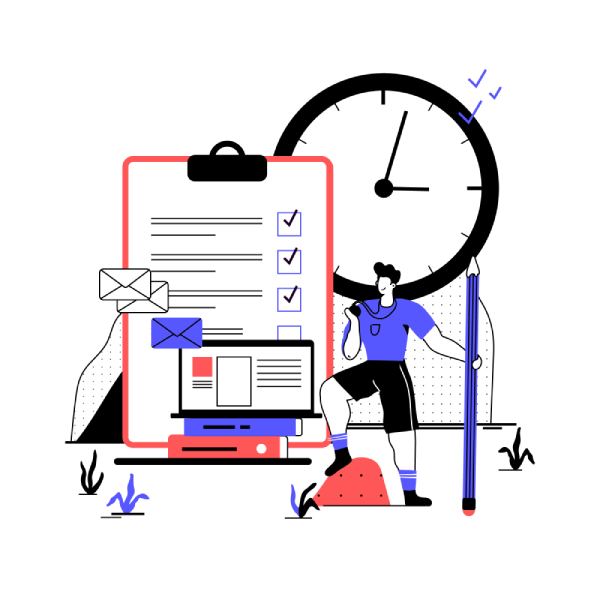
With monotasking insights to help you be more productive, along with common myths dispelled—now, let’s get into the practical strategies you can use to make monotasking work for you.
You’ll learn how to set up your digital workspace, manage your time, and track your progress—all while staying engaged through proven gamification techniques.
Let’s dive in.
1. Organize Your Physical Space
If your office setting is filled with physical clutter, you’ll find it challenging to do deep work on a single task. Here are some tips to declutter your physical space for monotasking:
- Create a clean, minimal desk setup with only the essentials visible.
- Have a clear desk policy where everything goes back in its box after use.
- Use physical barriers or room dividers if you’re in a shared space to block out visual distractions.
- Keep the things you use most often within arm’s reach so you don’t have to move, and separate areas for different activities like focused work, reading or creative tasks.
2. Optimize Your Digital Workspace
You can’t monotask without a tidy digital workspace. No ifs, ands, buts or maybes.
Here’s how you can start your journey into a new and improved digital workspace that’s built for monotasking:
- Uninstall never-used desktop shortcuts and close irrelevant browser tabs
- Create folder and file hierarchy by organizing your files into appropriate folders
- Reduce context switching by creating a dedicated workspace for each project
- Configure your notification settings to block out during focused work periods
- Use browser extensions that block distracting websites during work hours, and consider a second monitor setup with a clear purpose for each screen.
- Perform a seasonal cleaning of your digital workspace—for example, every 4 months if you are a power user.
How MagicTask Optimizes Your Digital Workspace-
Your digital workspace is the foundation for deep-focused work and MagicTask makes this easy.
From text shortcuts to full-screen mode, here’s how MagicTask can help:
- Organize Tasks with Text Shortcuts: When you need to organize your work, you can quickly create and arrange project folders with simple text inputs. This keeps your workflow streamlined and efficient.
- Dedicated Project Templates: You can use engaging and visually stimulating project templates for repeatable workflows to help you maintain an organized digital workspace.
- Engaging Elements (Points System and Virtual Rewards): When you’re rewarded for completing tasks, you’ll be motivated to keep your digital space tidy.
- Clean and Lightweight Interface: This removes the visual noise that fragments attention—no more cluttered screens or overwhelming menus.
- Full-Screen Mode: Block out visual distractions, like multiple windows and apps, with full-screen mode.
3. Improve Your Time Management
91% of employees say they could benefit from better time management at work.
It’s likely this same group of people aren’t practicing monotasking.
The connection is clear: Without better time management, your monotasking efforts are to no avail.
Here are some critical time management strategies to make monotasking a reality:
- Try time blocking, where you dedicate specific time slots to single tasks
- Use the Pomodoro Technique with 25-minute focused work sessions followed by short breaks. As you get more comfortable, try extending the sessions.
- Schedule your most challenging tasks during your peak energy hours.
- Build buffer time between tasks to allow for proper mental transitions.
- Set realistic deadlines for task completion, and don’t overcommit to multiple projects at once.
How MagicTask Benefits Your Time Management-
MagicTask makes managing your time engaging by combining project management and gamification features in one central platform.
The platform is designed to help you engage in deep work. Whether it’s the point system rewards, unlocking achievements, or dedicated themes, here’s how MagicTask can keep you focused for longer:
- Earn Points for Good Time Management: Bigger tasks earn more points, so you’ll tackle the hard projects and break them down into smaller tasks.
- Unlock Achievements and Level Up: As you complete tasks, you’ll unlock achievements and level up, creating a progression system that encourages good time management habits.
- Flag Priority Tasks: The priority flagging feature adds another layer of fun, you can visually highlight important tasks and earn bonus points for completing high-priority tasks on time.
- Custom Project Templates: Dedicated and custom templates save you time and reward you for keeping your processes organized.
- Think of MagicTask as Building Your Productivity Kingdom: Each task you complete, whether it’s a quick small task or a complex project broken down into subtasks, contributes to your overall progress and unlocks new themes and rewards.
4. Better Focus
Monotasking and better focus go hand-in-hand.
Without the ability to concentrate for long periods of time, you’ll be prone to cognitive switching costs that keep you from reaching the deep creative state of flow.
So here are some important focusing tips that will help you on your journey toward monotasking enlightenment:
- Book your calendar for meeting-free days for focused work
- Reduce background noise with noise-cancelling headphones
- Don’t let notifications on your desktop and mobile dictate your day. Turn them off.
- Keep the day’s main priorities at a minimum. Start with two per day.
How MagicTask Helps You Focus-
Focus sessions turn into an engaging and rewarding experience with MagicTask.
Through our unique mix of productivity and gamification features, you’ll have an environment and toolset that’s optimized for you to concentrate for longer periods.
Here are some of the platform’s standout features when it comes to improving your focus:
- Prioritize Essential Tasks: By creating a dedicated, engaging workspace for different teams, along with flagging important tasks, you can concentrate on what matters most.
- Get Rewarded For Focusing: As you maintain your focus and complete tasks, you’re rewarded with points and achievements, creating a positive feedback look that encourages sustained attention.
- Engaging Environment: MagicTask’s virtual world environment, complete with animations, sounds and engaging graphics, acts as a shield against external distractions.
- Less Like Work, More Like Fun: You can level up, unlock new themes and climb up the leaderboards by completing each task, making you focus on work that feels less like a chore and more like a productive journey.
5. Tracking and Adjusting
If you can’t track and measure, then you can’t improve. Not only is it simple, but tracking and adjusting is critical for monotasking.
Here are some measuring tips for getting the most out of your single-tasking efforts:
- Keep a focus journal to note when and why you drift.
- Document what works and what doesn’t to fine-tune your approach.
- Set specific, measurable goals for focused work sessions and review regularly.
- Use time-tracking tools to see how you spend your time and what patterns emerge in your productivity.
MagicTask Takes Your Tracking To New Heights-
Equipped with detailed analytics and roll-up reports, your journey for sustained monotasking will never be easier with MagicTask.
Here’s how the innovative platform can help you track and optimize your previous task performance:
- Document Status: Comment on each task and project while having the option to upload 10GB file attachments so you can fully record your progress. This keeps your documentation organized for insights.
- Detailed Analytics: Use the analytics in MagicTask V3 to see team performance, task completion percentages and project timelines.
- Data Analysis: This shows you where to improve, where to allocate resources and where to mitigate risks
- Develop Strategies: Once you see the data patterns, decision-making becomes easy, and you can develop monotasking strategies that work.
- Find Insights: Using the platform’s tracking tools to give you analytics and metrics to improve completion rates, resource allocation and project health
Implementing Monotasking in Daily Life
Improved memory, better relationships, more work/life balance, higher quality work—it’s clear that monotasking’s benefits change lives.
But, big positive change don’t come easy.
Making monotasking part of your daily routine is no different. It requires daily practice and perseverance.
However, with the right planning, tools and guidance, you can train to monotask like it’s second nature.
Here’s how you can start:
Morning Habits
To start monotasking in your daily life, focus on defining specific time blocks for different daily tasks.
For example, In the morning, dedicate 15 minutes to planning your day.
Prioritize your tasks and move only 2-3 of them to a focused block to avoid feeling overwhelmed.
- Emails: 30 minutes strictly for emails. Respond to urgent messages, and don’t check them outside this window. Magic Task’s full-screen mode can help with this.
- Task Planning: Spend a short time planning your tasks using a tool like MagicTask. Its “focus area” feature will help you prioritize what needs attention now and store the rest for later.
Workday Tips
- Deep Work Blocks: 90 minutes for main projects. Turn off notifications to keep distractions out. Use tools, like MagicTask, that support this structure and allow you to focus on one task.
- Task Transition: Finish or reach a natural break point before switching tasks. This will prevent mental fatigue and increase productivity.
Meeting Etiquette
Pre-meeting preparation: Review materials beforehand. During meetings, stay engaged by closing other apps and taking notes by hand, which will prevent mind wandering.
Evening Routine
Make time in the evening to wrap up. Review what you’ve achieved and update your task list for tomorrow.
With MagicTask, you can tally your points for the day and week, unlocking new themes as you go.
End the day with a calming activity like meditation so you transition from work to personal time.
By following this routine optimized for monotasking, you can focus and be more productive while reducing stress and making your workflow more efficient.
Tools and Resources for Monotasking
Monotasking isn’t a solo journey, nor can it be achieved on willpower alone.
You need the right mix of tools and resources to set yourself up for single-tasking success.
From easy-to-use focus timers to project management platforms, these resources can help you optimize for deeper work that creates better outcomes.
MagicTask
Built specifically for monotasking, MagicTask stands out by adding gamification to how you manage projects.
With its custom themes, points system, and virtual world environments, you can immerse yourself in a unique, engaging world of project management.
Pomodoro Timers
Pomodoro timers like Focus Keeper help you manage your work sessions by breaking tasks into smaller chunks. You work for 25 minutes and take a 5-minute break.
This keeps you refreshed and focused. Another option is Forest, an app where you “grow” virtual trees and turn your concentration into a game.
Time Timers
For distraction-free focus, Time Timer is a great tool. Its visual countdown helps you stay focused, and the simple design supports multiple time-blocking sessions.
Meanwhile focus apps can block distracting websites, manage notifications and offer custom intervals to fit your needs.
Project Management Tools
Use tools like Notion to organize your space. Task management, database and customizable views will keep your environment clutter-free.
With these, you can make monotasking more effective than juggling multiple tasks and increase your productivity and happiness in life.
Conclusion
The research doesn’t lie–-monotasking prevails over multitasking in just about every context, from personal health to social life to workplace productivity.
When you focus on one task at a time, you engage in deeper work and, as a result, complete your tasks with better care and precision.
However, monotasking requires discipline. So to help expedite your journey towards monotasking sainthood, here’s a recap:
- Monotasking is concentrating on one task at a time. It works because our brains are designed to process tasks sequentially.
- Monotasking is proven to improve your productivity, listening skills and work/life balance.
- Multi-tasking is a myth. In reality, what happens is task switching, where you constantly switch between tasks. This depletes your brain resources and induces recovery time every time you switch.
- Set yourself up for monotasking success by optimizing your digital workspace, improving your focus and your time management, and measuring your progress. Tools like MagicTask are dedicated to this.
- You can make monotasking part of your daily routine with the right tools, tips and guidance.
Ready to try monotasking out?
Explore MagicTask, the innovative platform that mixes project management with engaging gaming features like custom graphics, animations and a points rewards system.
With our platform, designed for monotasking, you’ll start your journey towards better productivity the right way.
One task at a time.
Similar Blogs
FAQS?Have questions? Look here
Monotasking, also called single-tasking, is the practice of focusing on one task at a time. Unlike multitasking, which involves switching between tasks, monotasking helps improve focus and efficiency by aligning with how the brain processes information.
Monotasking is essential for boosting productivity, improving memory, and reducing stress. It allows you to complete tasks with better quality and less mental fatigue compared to multitasking.
Monotasking improves attention span, time management, listening skills, and workplace morale. It also reduces cognitive overload and enhances creativity and problem-solving.
Monotasking minimizes distractions and attention residue caused by task-switching. By focusing solely on one task, you work more efficiently and achieve higher-quality results.
